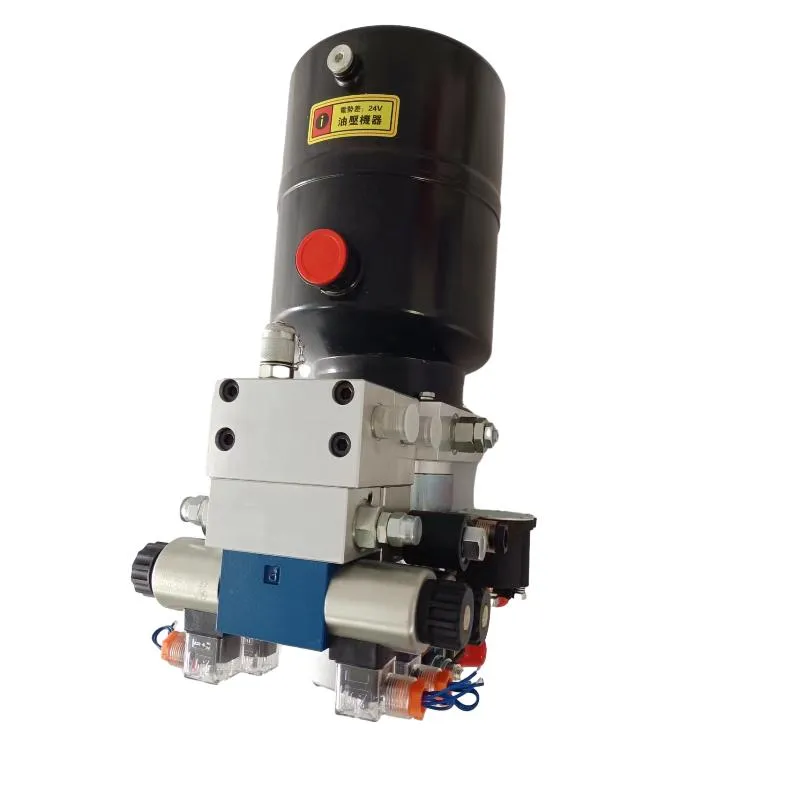Nov . 10, 2024 01:29 Back to list
Hydraulic Cylinder Manufacturing for Plungers and Precision Applications
Exploring the World of Plunger Hydraulic Cylinder Manufacturing
In the realm of hydraulic systems, plunger hydraulic cylinders are essential components that drive various industrial applications. These cylinders convert hydraulic energy into mechanical energy, facilitating movement and providing power in an array of machinery. The manufacturing of plunger hydraulic cylinders involves a systematic process that emphasizes precision, quality, and innovation to meet the growing demands of different sectors, including construction, automotive, and aerospace.
Understanding Plunger Hydraulic Cylinders
At their core, plunger hydraulic cylinders consist of a cylindrical barrel, a plunger or piston, and connections for hydraulic fluid. The operational principle is straightforward hydraulic fluid is pumped into the cylinder, exerting pressure on the plunger. This pressure generates force, allowing the plunger to extend or retract, which in turn performs work. The design and materials used in these cylinders are paramount, as they directly influence their performance, durability, and efficiency.
The Manufacturing Process
The manufacturing of plunger hydraulic cylinders comprises several steps, each critical to ensuring the final product meets the specific standards required for robust performance. The main stages include
1. Material Selection The choice of material is crucial for the reliability of hydraulic cylinders. Typically, high-grade steel or aluminum alloys are used due to their excellent tensile strength and corrosion resistance. Advanced coating technologies may also be applied to enhance durability further.
2. Machining Precision machining is vital in crafting the components of hydraulic cylinders. This process involves turning, milling, and grinding the materials to exact specifications. CNC (Computer Numerical Control) machines are frequently employed to achieve high precision and consistency across production batches.
3. Assembly Following machining, the components are carefully assembled. Each part, including seals and fittings, must be installed with exact specifications to prevent leaks and ensure smooth operation. Skilled technicians oversee this process to maintain high quality and engineering standards.
plunger hydraulic cylinder factory

4. Testing Once assembled, plunger hydraulic cylinders undergo rigorous testing to verify their performance and safety. This includes pressure testing, leak testing, and functional testing to simulate real-world conditions. Quality control at this stage is imperative to ensure that only products meeting industry standards are dispatched to customers.
5. Finishing The final aspect of manufacturing involves surface finishing. This may include polishing, painting, or applying protective coatings to prevent wear and corrosion. Aesthetic considerations may also play a role, particularly for products intended for visible applications.
Quality Assurance and Standards
Manufacturers of plunger hydraulic cylinders must adhere to strict quality assurance protocols. Compliance with international standards such as ISO 9001 ensures that the products are consistently manufactured to high quality. Moreover, industry-specific standards provide guidelines for performance, dimensions, and safety, which are critical in sectors like construction and automotive industries, where hydraulic systems face demanding operational conditions.
Innovation in Manufacturing
The field of hydraulic cylinder manufacturing is continuously evolving, driven by technological advancements. Automation and robotics are increasingly being integrated into the production line. This not only enhances efficiency but also reduces the likelihood of human error, leading to the production of high-quality cylinders. Furthermore, advancements in materials science have introduced innovative materials and coatings that improve the performance and longevity of hydraulic cylinders.
Additionally, manufacturers are focusing on sustainable practices, incorporating environmentally friendly processes and materials. The push for sustainability is becoming significant as industries strive to reduce their environmental footprint.
Conclusion
Plunger hydraulic cylinders play a pivotal role in various industries, operating behind the scenes to power machinery and equipment. The manufacturing process is intricate and demanding, requiring precision engineering and rigorous testing. As technology continues to advance and the need for efficient hydraulic systems grows, the plunger hydraulic cylinder manufacturing industry is positioned for innovation and growth. Through a commitment to quality and continuous improvement, manufacturers are poised to meet the demands of an ever-evolving market, ensuring the reliable performance of hydraulic systems worldwide.
-
1.5 Ton Flipping Oil Cylinder 70/82-40-217-720 - Hebei Shenghan Hydraulic Machinery Co., Ltd.|Precision Engineering&Customizable Hydraulic Components
NewsSep.01,2025
-
1.5 Ton Flipping Oil Cylinder 70/82-40-217-720 - Hebei Shenghan
NewsSep.01,2025
-
1.5 Ton Flipping Oil Cylinder 70/82-40-217-720-Hebei Shenghan Hydraulic Machinery Co., Ltd.|Customization, Chrome-Plated Piston Rod, Indel Seals
NewsSep.01,2025
-
1.5 Ton Flipping Oil Cylinder 70/82-40-217-720-Hebei Shenghan|Customizable Hydraulic Cylinder&Durable Oil Cylinder
NewsSep.01,2025
-
1.5 Ton Flipping Oil Cylinder 70/82-40-217-720 | Hebei Shenghan
NewsSep.01,2025
-
1.5 Ton Flipping Oil Cylinder 70/82-40-217-720 - Hebei Shenghan Hydraulic Machinery Co., Ltd.
NewsSep.01,2025
